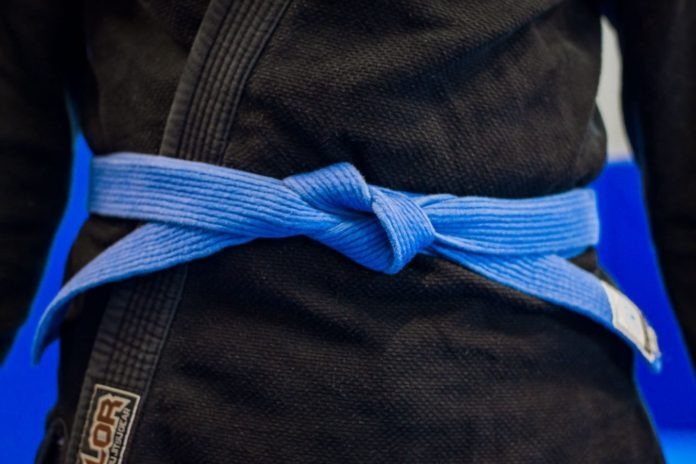
One of the first questions I usually get from new students of BJJ is when they can expect to get their first belt. For adults, that is the blue belt. It is natural for people to wonder when they’ll be able to get out of the beginner zone and be treated as if they’re “something” in the sport. It is the same in every sport. However, with Jiu-Jitsu being so vast and complex, the timeline for getting that first belt is quite different than other sports. In fact, it is different for everyone, based on how quickly they can master the fundamental BJJ blue belt requirements.
With every belt in Brazilian Jiu-Jitsu, you get different challenges and different requirements that you need to fulfill. While Jiu-Jitsu is highly individual, there are still certain benchmarks that everyone has to reach in order to understand the fundamental aspects that reflect the readiness to move to the next level, which in BJJ is marked by a change in belt color.
Out of all those belts, getting a blue belt is perhaps as hard as it is desired by everyone. Moreover, the BJJ blue belt requirements are no breeze as well – they include basically everything fundamental about Brazilian Jiu-Jitsu.
BJJ Blue Belt – The Most Coveted Jiu-Jitsu Rank
Being a blue belt is a fun and challenging period at the same time. It is pretty much like being in second grade in school. You’re not at the bottom anymore, but there are still so many people in grades above you. It feels great not to be a beginner, even though you know you’re just barely above that line. Nevertheless, the blue belt is the period when people can, and should focus more on Jiu-Jitsu, and lesson when they’ll get a belt or stripe, or how much they don’t know.
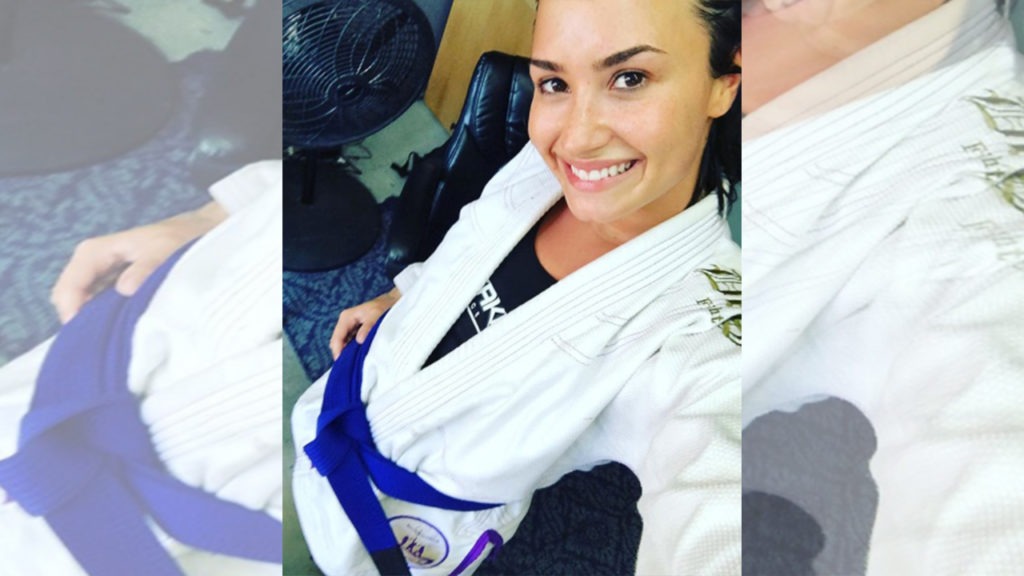
What I mean by that is that oftentimes, blue belts are held back by bad habits and white belt mistakes they still tend to do. that is what happens when people get promoted without fulfilling certain BJJ blue belt requirements that I think everyone should abide by. After all, a blue belt should know everything about the fundamentals of BJJ, even though it is not expected of them to actually know the ins and outs of those fundamentals.
BJJ Blue Belt Requirements – An Overview
Speaking of BJJ blue belt requirements, what exactly is expected of people in order to get their blue belt properly. When someone becomes a blue belt, there’s the knowledge that they should already posses, and which will help them not just survive the incoming onslaught of the blue belt period but also thrive during it.
The BJJ blue belt requirements are actually pretty simple – you need to be able to attack and defend from all major positions of Jiu-Jitsu with at least one viable technique. On top of that, you need to have at least one of each major submission category that you can turn to with a solid degree of success. Of course, nobody is going to expect you to pull everything off on black belts, but seeing that you know what you’re doing in certain positions is a mark of your readiness to graduate to the next level of BJJ.
The most important thing to note is that any BJJ academy worth being a part of will not only promote people based on their technical knowledge. Of course, attendance is important, but other things are real priorities. For example, certain aspects of grappling-specific movement are simply a must, as is some understanding of Jiu-Jitsu in general, its history, and its origins. Moreover, the biggest emphasis on self-defense is during this period of your BJJ journey, and the BJJ blue belt requirements should reflect that in every academy around the globe.
I’ll only mention this briefly, but there’s also a competition to factor in. It would not be smart to promote someone to a blue belt if they’re not actually already prepared to face at least other beginner blue belts in tournaments.
A Detailed Breakdown Of BJJ Blue Belt Requirements
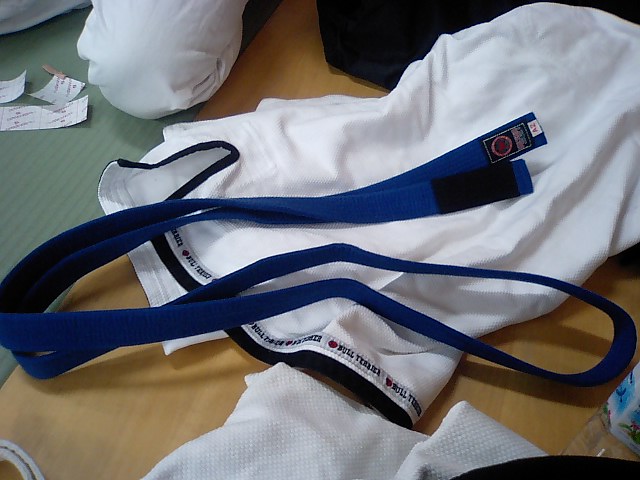
There are 10 basic categories of requirements that people should have knowledge of. that said, it is not about testing people like in other martial arts. In Jiu-Jitsu, it takes only a couple of rolls for an instructor to see if someone fulfills all the BJJ blue belt requirements listed here:
1. Movement
Since it all starts with movement, I expect white belts to be able o move in BJJ specific ways. Note that I say “move”, and not “excel at” because it will take years for people to perfect some of the BJJ-specific movements they haven’t encountered before. The list of movements within the BJJ blue belt requirements are many, but there are a few that are an absolute must for everyone.
Let’s divide movement further into categories to make it simple for everyone to understand. From a defensive standpoint, there are three movement patterns every blue belt needs to be able t do “in their sleep”. those are shrimps (aka hip escapes), bridges, and technical standups. Simply put, there’s no blue belt without this holy trinity of BJJ movements. [Read More]
In terms of standing, the sprawl, and penetration step, from a defensive and offensive aspect, respectively, are also a must. The break fall and front roll complete the list of moves that every blue belt should know how to perform. [Read More]
Also, while it may fall under the options category of “athleticism”, certain animal walk drills are also among the movement-based BJJ blue belt requirements. [Read More]
2. Bottom Game
When it comes to the bottom game, BJJ blue belt requirements area pretty straightforward – have a guard that is difficult to pass. In those terms, at least one open guard variation should supplement the closed guard that is obviously one of the first requirements in Jiu-Jitsu anyway.
-
Closed Guard
Staying in the closed guard, managing grip fighting, and preventing people from breaking it open are some of the key requirements. Getting back to the closed guard after someone opens it is another one.
-
Closed Guard Sweeps
Attack-wise, from the closed guard, you need to get on top, plain, and simple. Or submit, but submissions get a category of their own. That leaves us with sweeps from the closed guard that you need to master and there are three of those that you need in order to become a blue belt:
There’s really no limit on what you can do in terms of the open guard as a white/blue belt. However, as far as recommendations go, stick to the basic open guard – one leg hooked behind a knee, the other foot on the opposite side hip, grip on one leg, and one arm. It is also known as the tripod guard, given that it provides easy entries to the same sweep.
-
Open Guard Sweeps
Once again, you can feel free to expand on the sweeping options from open guard, or perhaps even work from an entirely different guard, however, the following two sweeps are stuff that works from white to black belt level, so why not learn them early?
3. Top Game
The focus on everyone training Brazilian Jiu-Jitsu as a white belt should bet the top game. Apart from guard retention, sweeping, and submitting from the bottom, everything else should be all about top positions. Why? Well, they’re the positions that get you points in the competition, and control and domination in sports or self-defense settings.
-
Side Control
Holding side control for as long as possible without the opponent escaping is one of the crucial BJJ blue belt requirements. To that extent, the “traditional” side control, Judo side control and North-South should be variations that a blue belt knows by the time they get their rank. [Read More]
-
The Mount
From the mount, it is all about control one again, and not letting the bottom person escape. The low mount is the starting point, and learning to keep it is a crucial skill. Given that it is not the nature of Jiu-Jitsu to just hold people down, at least one more variation in the form of the high mount is a blue belt requirement. S-mount is a bonus. [Read More]
-
Back Control
From the back, BJJ blue belt requirements are easy- stay there without losing control. A blue belt should be able to keep the back control of white elts and most of their peers for the duration of the round. Basic rotational control with double hooks and the seatbelt grip is a must, although a body triangle is always a great skill to develop early as well. [Read More]
-
Knee On Belly
The knee on belly position is one more key positions for anyone training Jiu-Jitsu. It is one of the hardest things for new students to learn, given the balance requirements, but it is one everyone needs without exceptions. Apart from being able to hold someone with your knee on their belly, switching it from one side to the other is yet another crucial skill and blue belt requirement. [Read More]
-
Turtle
You will deal with people that turtle up, and it is one of the key BJJ blue belt requirements to be able to break down a turtled opponent. While there are many directions in which you can take someone who is in turtle, two main ones are required for a blue belt:
Getting past the legs is an area of Jiu-Jitsu where you’ll spend most of your time anyway. Early on, you’ll need to be able to get past the same two guard variations that you should know. And once again, it all starts with the closed guard.
- Standing opening [Read More]
- Staple Pass [Read More]
- Single Underhook Pass [Read More]
- Torreando / X Pass [Read More]
4. Standing
An absolute must for anyone hoping to get a blue belt in my academy. There’s no point in giving out belts to people who can’t get a fight/match/roll to the ground. Since most takedowns come from wrestling or Judo, there’s no point in expecting blue belts to know as much as Judokas and wrelst4ers d, they can, however, master certain aspects of it. HEre rea the standing BJJ blue belt requirements:
- Guard pull [Read More]
- Double leg takedown [Read More]
- Single leg takedown [Read More]
- Body lock throws (rear and front) [Read More]
- Outside Reap (O Soto Gari) [Read More]
- Inside Reap (O Uchi Gari) [Read More]
- Hip Throw (O Goshi) [Read More]
5. Submissions
As previously mentioned, submissions deserve a category of their own. Getting people to surrender is a key skill in BJJ as tying a belt. I like to teach the students in my academy to have submission options from both top and bottom, and it is particularly useful to focus on subs that work from both those crucial BJJ positions. The following submissions are a must for anyone looking to be a blue belt, even if they never have the intention of competing:
- Cross Collar choke (from both closed guard and the mount) [Read More]
- Armbar (once again, from both closed guard and the mount) [Read More]
- Americana (from the mount and side control) [Read More]
- Kimura (from closed guard) [Read More]
- Collar choke (from the back) [Read More]
- Rear-naked choke [Read More]
- Ankle lock [Read More]
- Guillotine choke (from both closed guard and the mount) [Read More]
6. Escapes
The most underrated skill in Brazilian Jiu-Jitsu is the ability to successfully escape bad positions. People usually do not place an emphasis on how much skill, presence of mind, and technical abilities it takes to get out of mount or side control. Escapes are absolutely among the most important BJJ blue belt requirements. especially in the context of the main BJJ positions. In fact, you have to be able to escape any top position you know how to hold if you hope to get a promotion.
- Side control bottom (bridge and shrimp escape, Kesa Gatame escape, North-South escape) [Read More]
- Mount bottom (Bridge and roll escape, knee to elbow escape, armpit escape) [Read More]
- Back Control bottom (Bridge escape, bottom hook escape) [Read More]
- Turtle bottom (Sit out to guard, rolling escape) [Read More]
- Knee on Belly (ankle push escape, hip frame escape) [Read More]
7. Mindset
One of the things people usually miss when they’re looking at BJJ blue belt requirements (or belt requirements, for that matter) is a mindset. The way people think about Brazilian Jiu-Jitsu is just as important, if not more at the stage of white and blue belt, as any technique or movement they might be doing.
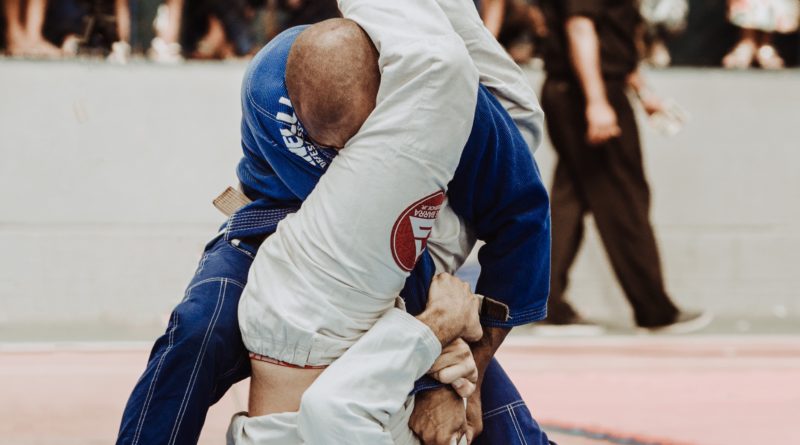
One more thing I consider important as one of the BJJ blue belt requirements in terms of mindset is how white belts approach chaotic situations. It is normal to hear stuff like “I don’t know anything” or, “I can’t, do that”, but if they come with a desire to change that then they’re more than ready to go to the next level. If they believe they can’t, there’s still work to be done.
The most important thing, though, when it comes to the mind is tapping out. Unless a student that is a blue belt in every other aspect is not ready to tap to people of their own rank or lower, they’ll need to stay a white belt. At least until such time that they learn that taping out is inevitable.
Finally, there’s no point in expecting white/blue belts, not to spaz, but this at least needs to be made clear for them.
8. Self-Defense
Nowadays, BJJ is more of a sport than a method of self-defense. However, it is still more than efficient in that area, and I do believe everyone needs to learn at least some key self-defense aspects of the art. That said, expecting people to roll with punches and check kicks before they execute overly complicated takedowns is as realistic as what Steven Seagal does in moves.
Apart from being able to submit people on the ground, which I qualify as the most important self-defense skill BJJ can teach you, there are three more aspects of grappling-based self-defense any blue belt should know:
- Headlock escapes (on the ground and standing) [Read More]
- Distance management (on the ground and standing) [Read More]
- Clinching [Read More]
9. Drills And Rolling
This is where things get interesting. Some schools don’t allow new students to roll for a while, limiting them to positional sparring. That is fine, but unless positional sparring is setup to teach people how to roll later on, what is the point?
Drills are something people should be doing early on, and they should be done both as positional drills (like guard passing drills for example) and situational drills (more of scenarios where people get to connect the techniques) they’ve learned. Doing a hundred reps of the Torreando pass left and tight would be an example of the first. Doing a guard pull into the closed guard, sweeping with a scissor sweep, stabilizing mount, and finishing with an American is an example of the second.
In terms of rolling, the BJJ blue belt requirements can be described with one word: awareness. Seeing that someone knows where they are at, and what course of action they should take si more than enough for a blue belt, regardless of the outcome of their actions.
10. Behavior
A white belt student that’s new to BJJ will be completely lost. A white belt student that is hoping to get a blue belt, on the other hand, should know certain things. While instructors don’t expect the same things from blue lets as they do from purple and brown, there are still some “everyday” things they need to know.
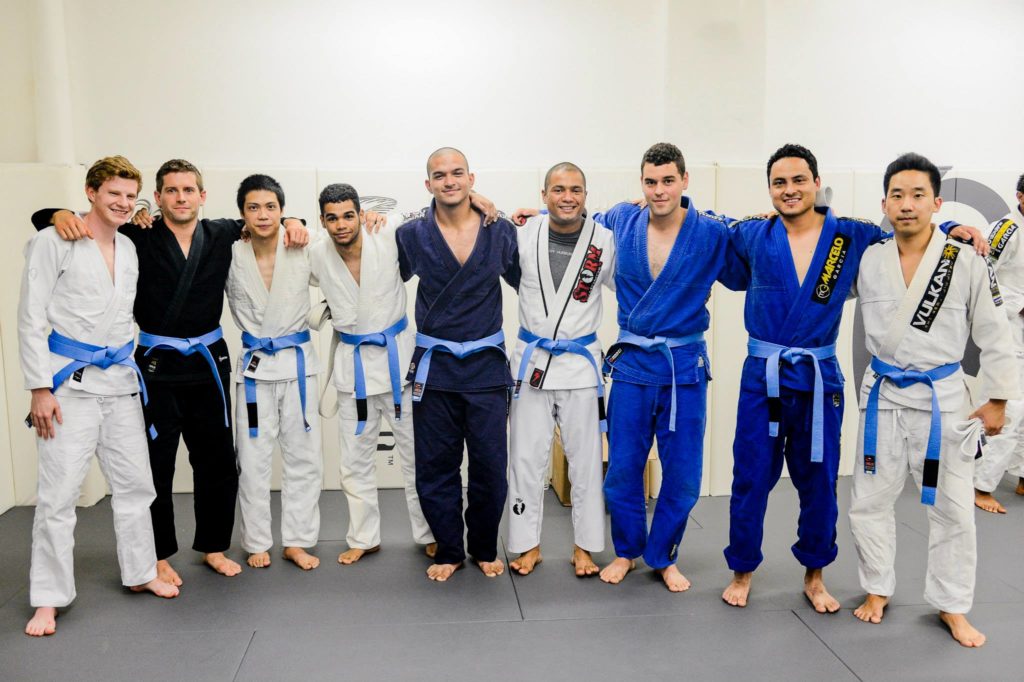
Other simple little things, like tying a belt correctly, knowing where to stand in line, being on time and doing the warm-ups properly, as well as helping new students out as much as possible are also BJJ blue belt requirements, even if they’re not written down in any curriculum.
11. Optional
Finally a couple of things that may come as “bonus” BJJ blue belt requirements. Competing in BJJ is not mandatory, nor are any fitness or athletic abilities. However, being able to do some basic athletic exercises and have at least a baseline of conditioning will come in handy. As will come competition tactics, for those that decide to test themselves in tournaments.
– Competing
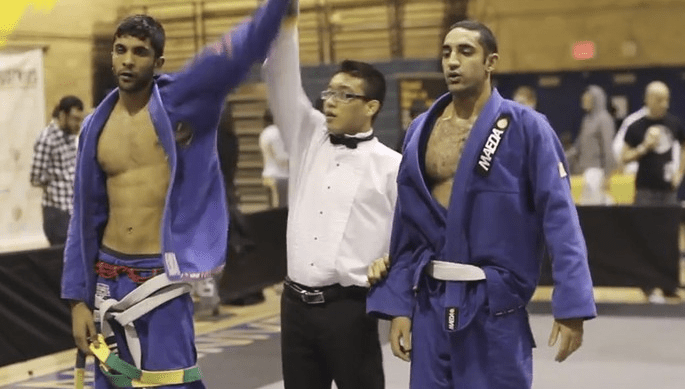
– Athleticism
There are no real athletic demands from people who 6train BJJ. Apart from being able to roll in training, there’s no real need for conditioning or strength. However, as a rule of thumb, begin able to do at least 30 pushups, 50 situps, and 10 pullups, and having the “lungs” to run a mile or two, will come in really handy. However, if there’s one thing to focus on, it is flexibility, particularly that of the hips and shoulders.
Concepts vs. Techniques For Blue Belts
Finally a word on the modern approach to Brazilian Jiu-Jitsu. Conceptual BJJ is all jazz nowadays, with people trying to explain grappling through scientific metaphors or philosophical quotes. While it is undoubtedly effective, concepts won’t work without techniques,s and vice versa. That means that instructors should figure out a way to balance both if they decide to incorporate concepts in their curriculums in addition to the mandatory techniques.
If concepts are taught to white belts, then they should have an understanding of base, posture, structure, and breathing as the main things that can make a difference. Furthermore, some specific attacking ad defensive concepts, like elbows to the ribs, head up, isolating joints, etc are appropriate for the blue belt level.
Last but not least, No-Gi. The IBJJF doesn’t allow white belts to compete in No-Gi but if you have intentions to do so, then training should begin as a white belt. No-Gi BJJ blue belt requirements are the same, there’s just more attention to grips, especially if you train both Gi and No-Gi.
Conclusion
So far, I’ve rarely seen BJJ blue belt requirements written down in a precise and meaningful way. Trying to clear that up, as this is a question that people ask more than any other, we tried to organize everything in this article. Regardless of what your academy requires, if you can achieve all of the above, you’ll not only be fit to wear a blue belt, but you’ll also be able to go toe to toe with most blue belts in Jiu-Jitsu competitions.
Related Articles
- Blue Belt requirements, struggles, and expectations
- Surviving a Rank of a BJJ Blue Belt
- 5 Main reason why people quit at Blue Belt
- Blue Belt mistakes caused by white belt habits
- What if you feel you’re not Ready For Your Blue Belt
- A practical blueprint for the journey through Brazilian Jiu-Jitsu


![Darce Choke Encyclopedia – Origins, Mechanics and Variations [2025] BJJ, choke, Brabo, BJJ Darce Choke, D'arce Choke, Darce BJJ Choke](https://bjj-world.com/wp-content/uploads/2017/11/JungPoirierLeeYahoo-218x150.jpg)









![Leg Lock Entries Helena Crevar DVD Review [2025] Leg Lock Entries Helena Crevar DVD Review](https://bjj-world.com/wp-content/uploads/2025/03/leg-lock-entries-helena-crevar-dvd-review-218x150.png)
![Special K Guard Neil Melanson DVD Review [2025] Special K Guard Neil Melanson DVD Review](https://bjj-world.com/wp-content/uploads/2025/03/special-k-guard-neil-melanson-dvd-review-218x150.png)
![Arm Bar It All Shawn Melanson DVD Review [2025] Arm Bar It All Shawn Melanson DVD Review](https://bjj-world.com/wp-content/uploads/2025/03/arm-bar-it-all-shawn-melanson-dvd-review-218x150.png)


![Advantage Over Time Outside Passing Jozef Chen DVD Review [2025] Advantage Over Time Outside Passing Jozef Chen DVD Review](https://bjj-world.com/wp-content/uploads/2025/03/outside-passing-jozef-chen-dvd-review-218x150.png)
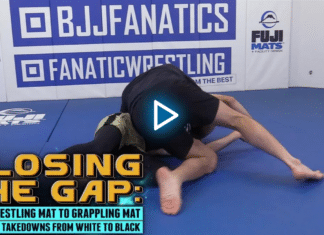




![Assassin Choke Baret Yoshida DVD Review [2024] Assassin Choke Baret Yoshida DVD Review](https://bjj-world.com/wp-content/uploads/2024/10/assassin-choke-baret-yoshida-dvd-review-100x70.png)


![Unpinnable Mount Escape Mastery Haleem Syed DVD Review [2025] Mount Escape Mastery Haleem Syed DVD Review](https://bjj-world.com/wp-content/uploads/2025/01/mount-escape-mastery-haleem-syed-dvd-review-100x70.png)


![Nicholas Meregali No-Gi System DVD Unpacked: A Detailed Review [2024] Nicholas Meregali No-Gi System DVD Unpacked: A Detailed Review](https://bjj-world.com/wp-content/uploads/2024/09/nicholas-meregali-no-gi-system-dvd-unpacked-review-100x70.png)


![Grappling Takedown Dominance Brandon Ruiz DVD Review [2025] Grappling Takedown Dominance Brandon Ruiz DVD Review](https://bjj-world.com/wp-content/uploads/2025/01/grappling-takedown-dominance-brandon-ruiz-dvd-review-100x70.png)

![Upper Body Chain Attacks Janine Mocaiber DVD Review [2025] Upper Body Chain Attacks Janine Mocaiber DVD Review](https://bjj-world.com/wp-content/uploads/2025/03/upper-body-chain-attacks-janine-mocaiber-dvd-review-100x70.png)
![Weight Training For Grappling Michael Israetel DVD Review [2025] Weight Training For Grappling Michael Israetel DVD Review](https://bjj-world.com/wp-content/uploads/2025/01/weight-training-for-grappling-michael-israetel-dvd-review-100x70.png)
![Welcome To The Darce Side Travis Moore DVD Review [2025] Welcome To The Darce Side Travis Moore DVD Review](https://bjj-world.com/wp-content/uploads/2025/01/welcome-to-the-darce-side-travis-moore-dvd-review-100x70.png)

![Systematically Attacking The Crucifix Gordon Ryan DVD Review [2024] Systematically Attacking The Crucifix Gordon Ryan DVD Review](https://bjj-world.com/wp-content/uploads/2024/10/systematically-attacking-the-crucifix-gordon-ryan-dvd-review-100x70.png)

![Osoto Gari for Jiu Jitsu Jackson Nagai DVD Review [2024] Osoto Gari for Jiu Jitsu Jackson Nagai DVD Review](https://bjj-world.com/wp-content/uploads/2024/10/osoto-gari-for-jiu-jitsu-jackson-nagai-dvd-review-100x70.png)
![Baby Shark Guard System Diogo Reis DVD Review [2025] Baby Shark Guard System Diogo Reis DVD Review](https://bjj-world.com/wp-content/uploads/2025/02/baby-shark-guard-system-diogo-reis-dvd-review-100x70.png)
![Crossing and Spinning Steps To Attack Israel Hernandez DVD Review [2024] Crossing and Spinning Steps To Attack Israel Hernandez DVD Review](https://bjj-world.com/wp-content/uploads/2024/09/spinning-steps-to-attack-israel-hernandez-dvd-review-100x70.png)
![No-Gi Pressure Mastery JT Torres DVD Review [2024] No-Gi Pressure Mastery JT Torres DVD Review](https://bjj-world.com/wp-content/uploads/2024/10/no-gi-pressure-mastery-jt-torres-dvd-review-100x70.png)
![A Blueprint For Smeshing Khabib Nurmagomedov DVD Review [2024] A Blueprint For Smeshing Khabib Nurmagomedov DVD Review](https://bjj-world.com/wp-content/uploads/2024/10/blueprint-for-smeshing-khabib-nurmagomedov-dvd-review-100x70.png)
![The Buchecha Gi Takedown System DVD Review [2025] The Buchecha Gi Takedown System DVD Review](https://bjj-world.com/wp-content/uploads/2025/01/buchecha-gi-takedown-system-dvd-review-100x70.png)

